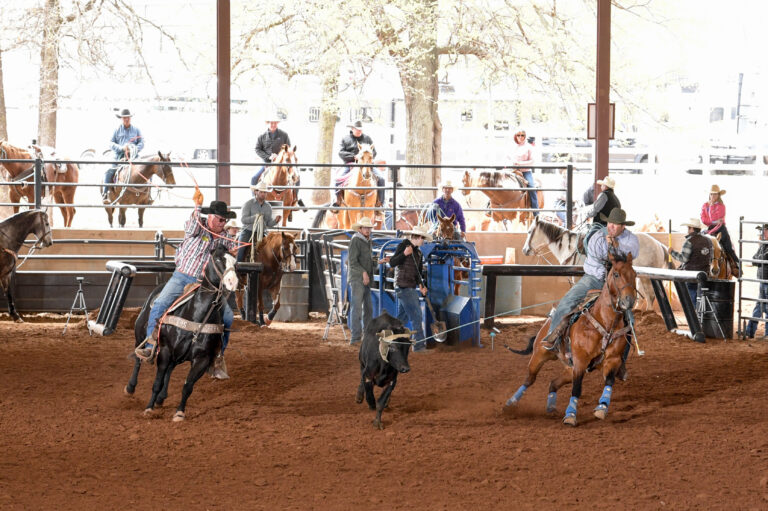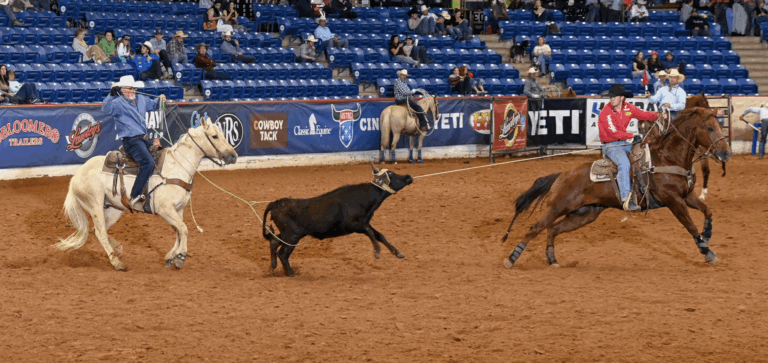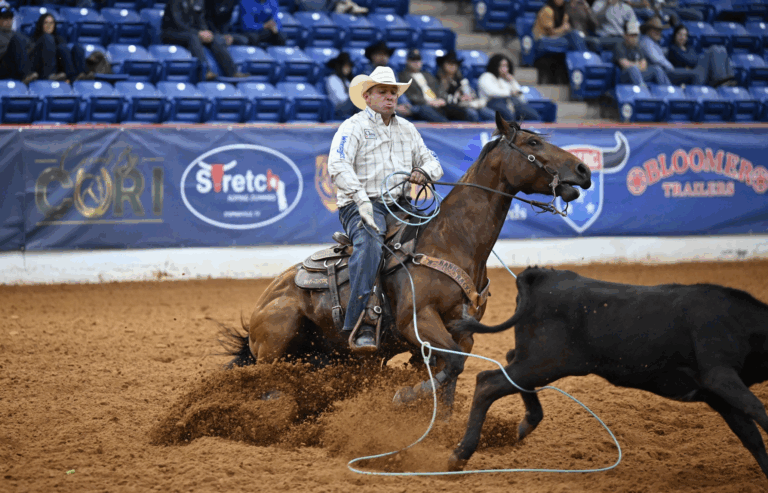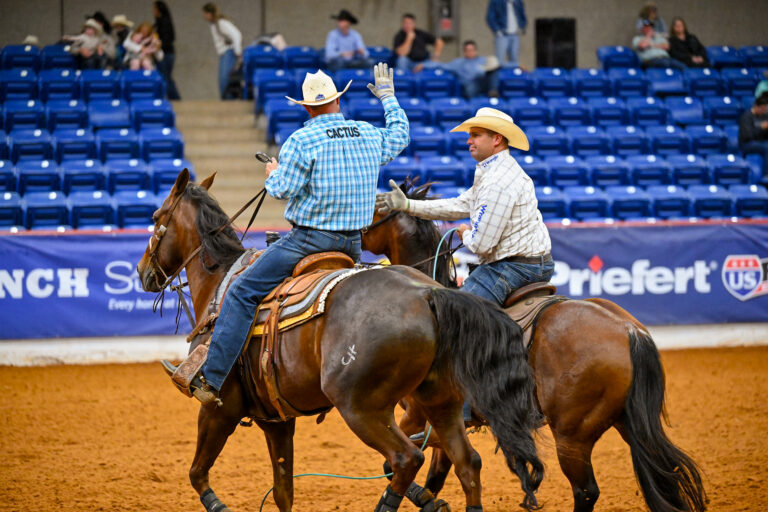At the Journal, we’ve attempted to corral all of the fuss on these pages. That’s an impossibility, but we’re hoping this package is an entertaining and resourceful glance at snowbird paradise, whether you’ve already nabbed a second home in the Valley of the Sun or are taking your first trip.
There’s a saying among transplanted team ropers around Phoenix: You go there the first time on a two-week vacation. The following year, you stay for six weeks. And the year after that, you buy a place there. Montana’s Bill Davis didn’t even wait that long to buy his plot west of Wickenburg. Out in the tiny community of Forepaugh, there are 22 roping arenas within three miles of his house.
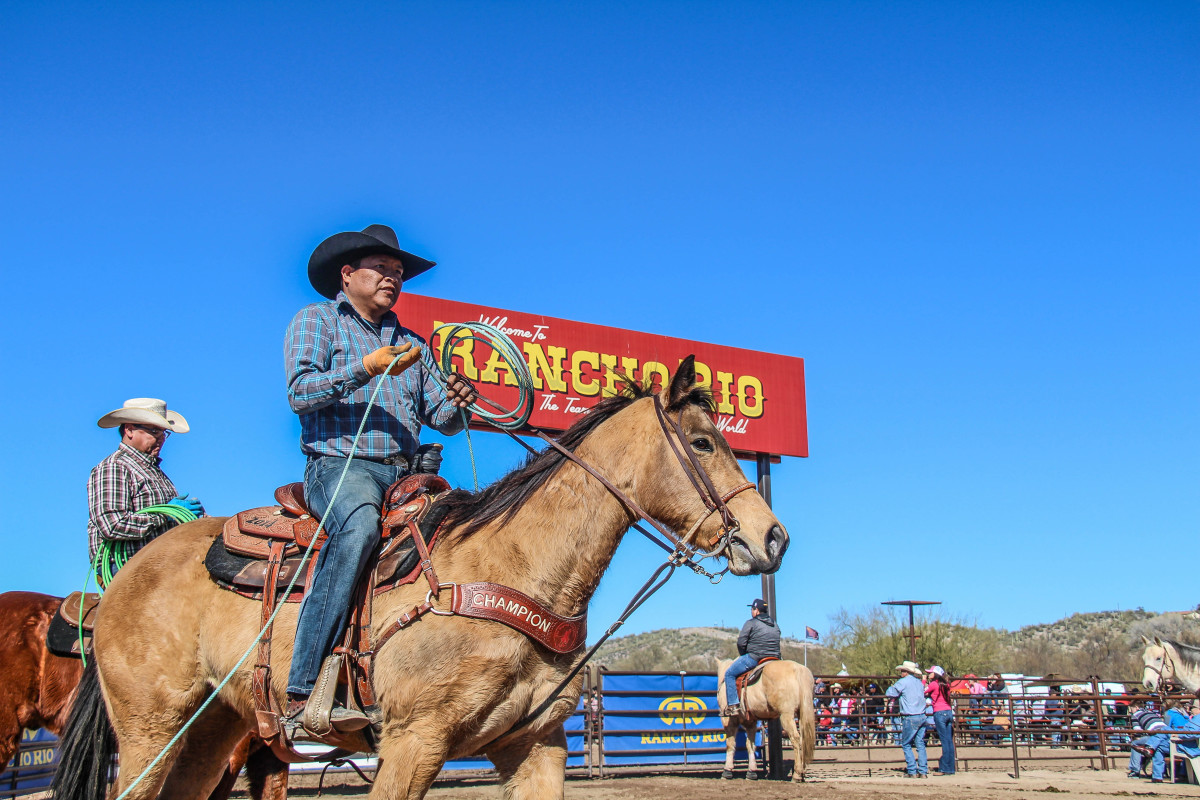
“We spend six months there,” said Davis, 70. “Do it while you can because they’ll outlaw it soon, seeing as how it should be against the law to have that much fun.”
Some ropers arrive in the desert as early as October, but temperatures don’t fall out of the 90s until November. December through March offers that sweet spot—a daily high of around 70 degrees. Those months also boast several big USTRC and WSTR ropings at Arizona’s best venues, sandwiched among a stunning array of local jackpots every single day of the week.
Davis, a retired rancher, is the quintessential snowbird as a 4-Elite heeler, and is familiar with the entire atmosphere. He’s kicking off his sixth straight winter in roping paradise.
“The beauty of the whole thing in Arizona is the different numbered ropings and different age limits,” Davis said. “It’s pretty hard to drive by one. I think there were 22 ropings each week last year in Wickenburg. You can pick and choose where you want to go based on format. Each day, we make the decision on where to go based on the best chance we have to beat ’em.”
Lest you think ropings only cater to the low-numbered, high-mileage snowbird crowd, many producers offer at least one day for high numbers with no age caps, as well.
“I probably jackpot one or two days a week, at least,” said Jordan Olson, an 8-Elite heeler who’s lived in the Valley 15 years. “I can go to two or three every week from Buckeye to Wickenburg to Cave Creek without trying very hard. And if you want to drive a little more, you can go down to Coolidge where they have high numbers every Wednesday.”
He also surmises that ropers under 40 and in that 4–7 classification range can jackpot four days a week, since most pots on the weekends have no age caps. Rhett Nichols, 18, has grown up jackpotting in the Valley and is now turning steers at Rube Woolsey’s Walking N Arena in Casa Grande while attending Central Arizona College. But he still prefers rural Wickenburg for jackpotting.
“I could go to something there every day when I was in high school,” said Nichols, whose mom and dad and two sisters all team rope. “There has never been any shortage of ropings for me, even once I got my 6 card last year.”
Decisions, decisions
When Davis hauled his living-quarters trailer to Arizona the first time six years ago, he spent about two weeks touring the different communities, camping for three days each in Cave Creek, Wickenburg, Forepaugh, Aguila and Wittmann. He already had friends in many of those places.
“I have two jobs,” he said. “One is team roping, because it’s something my wife and I can do together, and I also do a little real estate. Plus I’m still involved in registered Angus bulls.”
Davis ranched for years in Sidney, Mont., before selling the ranch, but said thankfully the property wasn’t burned by several fires that came close this summer. He was looking forward to his annual migration from Belgrade, Mont., to Forepaugh, Ariz., at the end of October.
Davis and many others say their all-time favorite week of roping in Arizona is the first week of December. That’s when local producers host dozens of warm-up jackpots for all of you on your way to the World Series of Team Roping Finale XII.
In fact, Rancho Rio in Wickenburg—the town directly on U.S. Route 60 to Vegas—even named its eight solid days of jackpots (Dec. 4–12) “Las Vegas in Wickenburg.” Formats are $150 a man, enter up to three times, and you can hit every roping from a #8 to an Open, plus a Century, and some high-stakes events for double the fees.
“That week, or 10 days between Thanksgiving and the World Series Finale in Las Vegas, that’s the best 10 days of jackpotting anywhere in the country,” said Olson. “If you’re in Wickenburg that week as a high number, you can hit a #13, #15 or Open, and have a chance to win $2,500 to $25,000 every single day.”
Olson lives in Surprise, another hot spot where several team ropers have bought homes in the past decade—many from South Dakota. The west-Phoenix suburb is much closer to big-city shopping and recreation than the Wickenburg area, and isn’t far from two of the three biggest indoor/outdoor roping venues in Phoenix—Dunn’s Arena and South Buckeye Equestrian Centre.
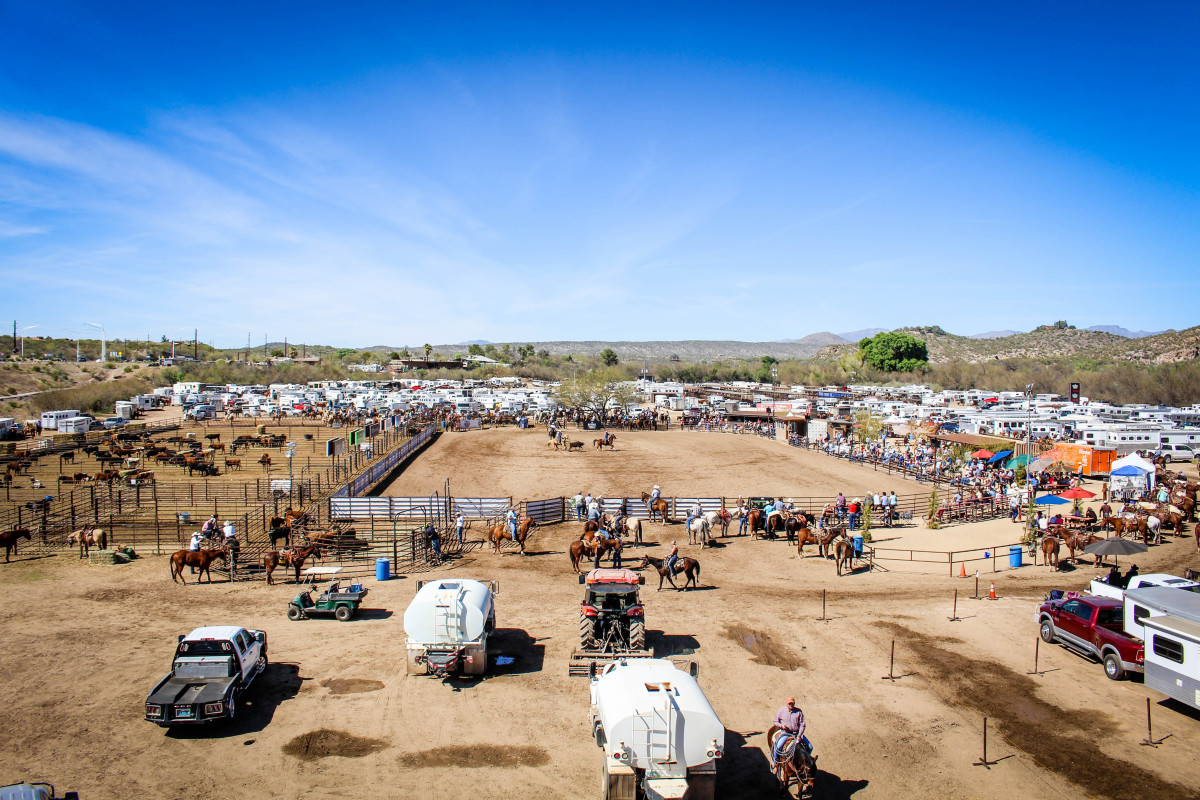
Another nice reason to camp in Arizona is the handful of big-time weekend ropings in the Phoenix metro area. On the USTRC side, one of the biggest and best in the country for decades has been Lasso del Sol in December at WestWorld in Scottsdale, along with the Mike Cervi Jr. Memorial in Casa Grande in late February. The World Series lands in Queen Creek around New Year’s Eve and in Casa Grande in mid-January. Then roper-mania hits Buckeye the first week of February, followed by Dynamite’s Title Fights a couple of weeks later and back to Buckeye the first week of March.
“Queen Creek is probably one of the biggest ropings in Arizona all year,” Olson said. “Those three World Series ropings (in Queen Creek and Buckeye) are three of the best winter ropings you can go to in the country.”
Read on for all the goods we can gather on where to stay, where to rope, and how to live while in Arizona this winter.
The North Phoenix area
Arguably, no commercial roping arena in the West has more heritage than Cave Creek’s Dynamite Arena. It began hosting twice-weekly jackpots in the 1970s when it was one of just two such facilities in the Phoenix area. It was where many of today’s WNFR qualifiers from Arizona cut their teeth as kids and today, it’s the only remaining local arena with that legacy.
“We would come to Dynamite on Sundays when we were in Arizona to rope in the late 1970s and early ’80s,” Bob Feist recalled. “In those days, there was no handicap system in place, so you never knew who you might see there—Jake, Clay, Al Bach and many others lived in Arizona then.”
After three decades, Dynamite Arena—now surrounded by residential development—is still going strong and its friendly backyard atmosphere make it a favorite gathering place twice a week for Senior Wednesdays and Dynamite Sundays. It was operated by Ron Treat in the 1990s, then spent a six-year run with Levi Schofield at the helm, during which it began hosting the World Series sanctioned The Title Fights each February. Management still knows every roper by his or her first name. Dynamite offers 15 full RV hookups and 50 stalls for the winter.
“The Title Fights have become a can’t-miss event in Phoenix each February,” said Daren Peterson, who bought the arena with Bryan Beaver three years ago. “It has special fees and limited entries, so you don’t have to rope against 600 teams to win a lot of money. At last year’s Title Fights, ropers pocketed $410,500 over four days.”
Old-school horseman Travis Ericsson of Rio Verde has been a fan of Dynamite since he paid his first entry fees there in 1997. Now a 6/7, he can still be seen at the tree-lined arena weekly. In fact, he was busy breaking in the Dynamite steers back in September.
“It’s always been my favorite place to rope because I’ve always enjoyed the people who’ve owned the arena and I’ve always been very lucky there,” he said.
Many a tall tale has been told around Dynamite’s infamous Snack Shack, and Ericsson says the shack’s green chili cheeseburgers are so good, he would go there to eat even if he wasn’t roping. And he never misses Dynamite’s Title Fights in February.
“I won the #12 and #13 there one year,” he said. “Highlight of my roping career.”
Ericsson also appreciates sponsorship at Dynamite ropings by Yeti, the company that features him in an ad for its Rambler Bottles. When he isn’t breaking in steers, Ericsson does some “wild cow catching”—which is how Yeti discovered him—but he also gives roping lessons and tunes up rope horses (EricssonEquine.com).
Best known for its weekly fun, Dynamite hosts Over-40 jackpots on Wednesdays and has no age minimum on Sundays. Then on Fridays, the pots are strictly for Over-50 ropers, with an Over-60 roping, as well. The Dynamite crew also specializes in personal-type ropings that include a Halloween costume roping; Ugly Sweater Roping on Christmas Eve; YETI Classic roping, where they bring in Bill’s Beer & Bait Truck with free margaritas for the ropers; and a Saint Patty’s Day 10-steer called Rope for the Green and Gold, in which the winner gets an actual bar of gold.
Dynamite is “a different ball game” than it was in the late 1960s, says one local who’s been turning steers there twice as long as Ericsson. Two-time PRCA world champion header John Miller is a longtime resident of Cave Creek.
“Dynamite is still such a draw,” said Miller. “It gets all the weekenders—women, kids, old-timers, everybody. Dynamite is kind of a tradition, really.”
The Pro Rodeo Hall-of-Famer won world championships heading in 1970 and 1971, won the NFR average title with Ace Berry in 1973 and was the PRCA’s reserve world champion steer roper in 1972 and 1973. Now 75, he’s still earning money at both ends.
“I’ve got a head horse but I heel on him,” he said, laughing. “I just love to go compete.”
Last year, Dynamite hosted more than 18,000 teams and introduced a new Wrangler warm-up area, BEX waiting area for heelers, larger boxes and revamped Preifert lead-up chutes.
“They have good ground, they cut and manage their cattle there, and they get big numbers so you can rope at some money,” Miller said. “But honestly, you go there to visit. Everybody that ropes comes there. Dynamite’s always been social hour.”
Nobody in the Valley has logged more jackpot time around Phoenix than Miller, who also enjoys going to Rancho Rio and Downtown Arena in Wickenburg. He enjoys the conditions at both and likes that Downtown Arena because it’s “customer-conscious.”
This winter, Miller may even host some weekly ropings of his own at his picturesque home in the Cave Creek foothills, so ask around and stay tuned for updates.
Another nice outdoor venue in north Phoenix is Arizona Horse Lover’s Park, where the longest-running producer in the Valley today, Chad Willson, first began producing ropings 17 years ago. Different management has made it tough for producers there now, so you’re not likely to see jackpots at this handy north Phoenix location this winter, but it remains a great place to ride or barrel race.
In the past, there have also been jackpots in the town of Cave Creek at the Memorial Arena Rodeo Grounds and up the road at a saloon downtown near the infamous Harold’s Corral. Finally, Double C Productions has been known to host team ropings at Larkyn Memorial Arena in New River, just northwest of Cave Creek.
Anything you need in Cave Creek, from a jar of Furazone to a rope to a saddle, can be purchased a few blocks from Dynamite Arena at Dynamite Horseman Supply (DynamiteHorsemanSupply.com), where the team-roping Irion family has been taking good care of ropers for 20 years. Additionally in north Phoenix, 6 header and 16-time NFR saddle bronc rider Mel Coleman owns Black Mountain Feed, Anderson’s Feed & Tack and the C&C Hay Barn (BlackMountainFeed.com). The Canadian Pro Rodeo Hall of Famer has lived in Cave Creek since the 1990s.
Of the multiple communities around Phoenix where ropers have fun, Cave Creek tops most lists. The shopping and dining is bar none, and the nightlife in downtown Cave Creek is rich. The legendary Harold’s has been around for 82 years and often battles its neighbor, the Buffalo Chip Saloon and Steakhouse, for parking since both are often packed, with the Chip sporting live bull riding. Closer to Dynamite Arena along Carefree Highway, ropers enjoy stopping for meals at the Heart & Soul Café—twice named Best Breakfast in the Valley—or at the roper-friendly Peaks & Valleys Restaurant.
“Team Roping Capital”
Look up “Team Roping Capital of the World” on Facebook, and you’ll find Wickenburg. The town of 6,300 people is roughly 45 miles northwest of Phoenix and boasts six venues offering competition seven days a week.
Gold prospectors first located this spot along the Hassayampa River, and ranchers joined with miners to found the town of Wickenburg in 1863. Dude ranches have long been its claim to fame, including the first area ranch started in 1913, followed by Remuda, Kay El Bar, Rancho de los Caballeros, and Flying E ranches, just to mention a few. If you like to golf and you settle on Wickenburg for your vacation, bring your clubs for a round at Rancho de los Caballeros, which is now a golf resort, or Wickenburg Ranch (“Lil Wick”), where you can golf in jeans just four miles north of town.
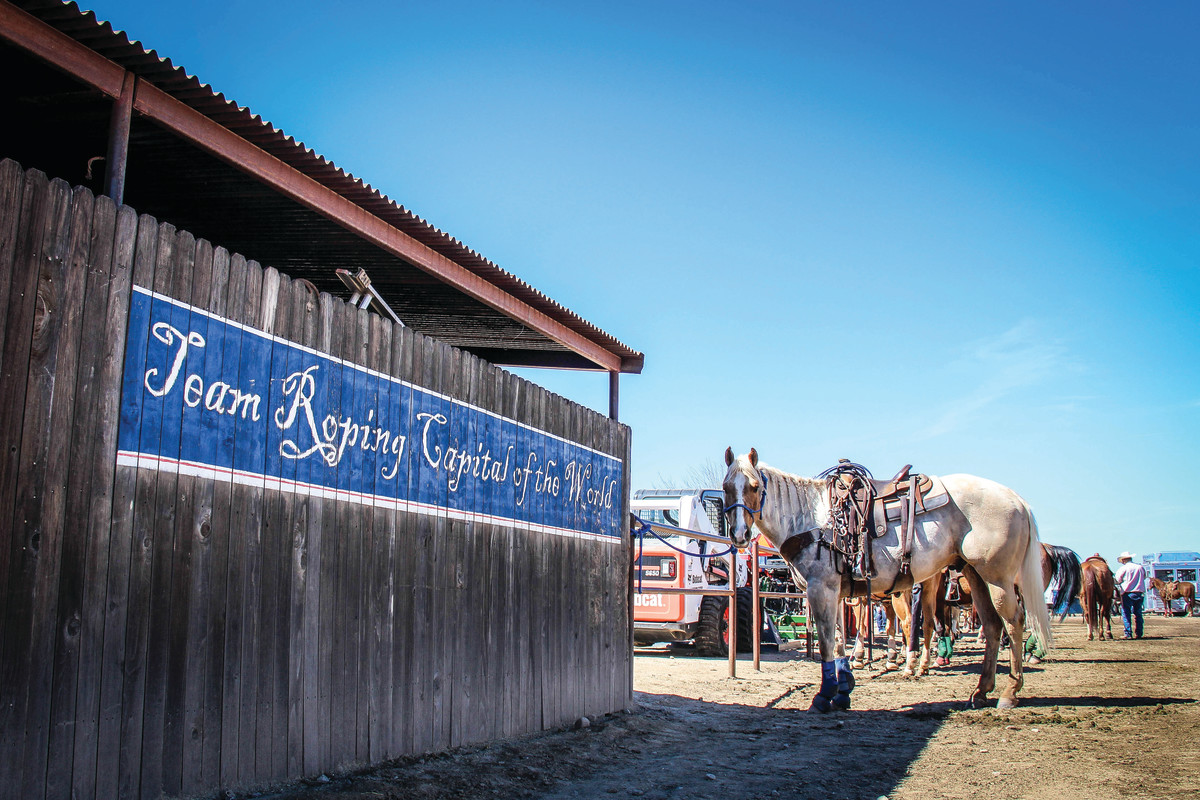
The largest roping venue in the area, Rancho Rio, operates two arenas and offers 250 stalls and 50 RV hookups, as well as concessions at El Ranchero and tack courtesy of Double D Western World. The 55-acre property is nestled in the picturesque Hassayampa River Valley and serves as a trailhead for rides through the riverbed. Launched five years ago by co-owners Ty Yost, Ty Grantham and Bob Crosthwaite, the venue boasts occasional specialty ropings and barrel racing jackpots, and will offer weekly jackpots, including “Perfect 10 Fridays” for the over-40 crowd and “Legends Only” Tuesdays for ropers over 50.
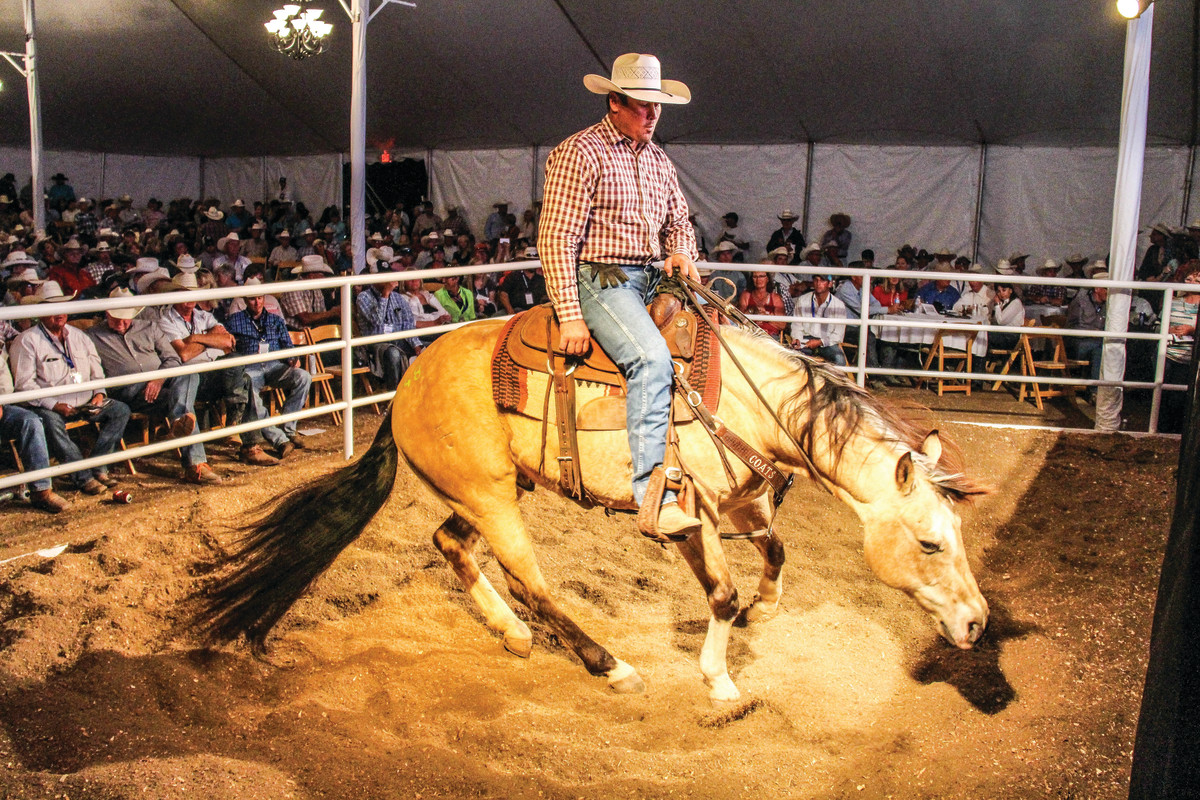
The Rancho Rio season kicks off Nov. 4, with a retro Team Tying ($60 per man, enter three times) and a #10 with $10,000 and Gist buckles going to first place. The venue will boast other major events this winter, including a #10 dually truck roping on Thanksgiving weekend (with a #8 in which 20 saddles will be awarded) and traditionally another truck roping in late January.
“One of my favorite arenas is Rancho Rio, primarily because of the operation,” said Olson. “You know exactly what you’re getting there. If the roping starts at 10:00, you know it will start at 9:59. The cattle, the flaggers and the staff are all first-class and you know what you’re getting.”
Aside from December’s week-long Las Vegas warm-up ropings, Rancho Rio will offer a week of roping (all numbers) in early February during Wickenburg’s Gold Rush Days. The town even offers a shuttle service between downtown and Rancho Rio so you can ride into town to shop or eat lunch between ropings. Throughout the season, the venue also holds qualifiers for the NTR National Finals it hosts March 5–10, 2018, along with a big horse sale.
Longtime rodeo and jackpot veteran Mike Fuller from the Pacific Northwest will offer weekly ropings at the Downtown Arena, and even some higher-numbered jackpots for over-40 ropers (an underserved niche). Like its nickname denotes, the arena is located very near downtown and is often mentioned as a favorite venue in Wickenburg.
“I really like the Downtown Arena,” said Nichols, a 6/5-Elite college freshman who grew up living and roping in Wickenburg. “It’s just a friendly setup. You’re not in a race to go catch the steers. It has a friendly score and friendly people.”
Olson also likes Mike and Karen Fuller and says they are “for the roper.”
“They have a great arena and great ground, and it’s very close to Rancho Rio,” said Olson. “Within a mile are the two best arenas, I think, in the whole Valley.”
In the nearby foothills lies the Wickenburg Rodeo Grounds, which hosts a plethora of activities each winter, from National Senior Pro Rodeos to ranch rodeos and occasional team roping jackpots, which usually include the annual Silver Bit Classic in January, produced by Scott Whitworth. This year, look for three-time NFR heeler B.J. Campbell of Aguila to produce weekly ropings at the Rodeo Grounds (BJCampbellTeamRoping.com).
Simpson Ranch Arena is farther south down the Hassayampa, also situated in a beautiful riverbed close to town. The tree-lined venue holds numerous saddle ropings, benefit ropings and weekly jackpots. This year, they’re all being produced by Kyle Chrisman of Wyoming (Facebook.com/SimpsonRanchArena).
And out west of Wickenburg toward Forepaugh is McFarland Arena, which has also seen some revolving producers over the past handful of years. It’s likely to host a few jackpots courtesy of Yost events again this year.
For feed, tack and Western apparel, head to Double D Western World in Wickenburg. And for a mouth-watering steak after the jackpot, ropers recommend Charley’s Steak House. An old-school place for drinks and dinner is the Rancho Bar 7. Young Nichols prefers Anita’s Cocina for Mexican grub and The Mecca Sports Bar & Grill, along with Bar 7.
Finally, an out-of-the-way eatery you don’t want to miss if you camp near Wickenburg is Nichols West in Congress, Ariz. The operators are British and launched the original Nichols is in East Hampton on Long Island. The food is scrumptious, so it’s worth the drive. And Bill Davis says they have “awesome oysters.”
The West Phoenix area
Halfway between Wickenburg and Phoenix, directly off Highway 60, is the Western Trails Arena—unique in the area. Smack in the middle of a 14-acre Old West setting complete with two saloons and a steakhouse/grill, the venue often boasts live music and boutique shops, giving spectators more entertainment than roping alone.
Producers have been playing musical chairs to gain residence at Western Trails for a handful of years. This winter, it looks as though High Call Productions, run by Jim Nichols, will be at the helm of weekly jackpots there. Fridays will feature a #11 and a #9 Over 40, and each Saturday starting in mid-November the arena will host an #8, #10 and #13 over/under. While Western Trails’ arena fence itself is a bit more temporary than some and the roping chute has a bit of age, the venue is a draw for its unique atmosphere.
“It’s different than everywhere else,” said Olson. “The other arenas are pretty serious, but at Western Trails, people are in vacation mode, like, ‘Let’s go have a beer.’”
Case in point: Last fall at Western Trails, Whip and Tammi Lewis were hosting their Best Ever Goat Roping two Fridays per month for $5 per roper, with a 60-percent jackpot. The arena is open noon to 5:00 for riding ($5 fee for the entire family), and the saloons often have karaoke night between Sunday Night Football parties.
The largest west-Phoenix venue boasting multiple arenas is the South Buckeye Equestrian and Events Center. Along with four arenas (indoor and outdoor), it also boasts The Tack Room, a tiny enclave below the crow’s nest with barstools and a full bar for bored spectators or disgruntled ropers.
In addition to hosting two huge World Series ropings, “Buckeye” is the home of several large barrel races each winter, including the Classic Equine Futurity and Derby each January. Management produces weekly barrel races and team ropings, along with occasional rodeos and other events. Buckeye offers a full RV Park with 100 full hookups and wifi (nightly or monthly), plus 16×16 stalls.
Finally, you can set up camp at the storied Dunn’s Arena, owned by the Tanner family in Litchfield Park. Full hookups aren’t available except a few by reservation. However, the facility has showers, three arenas, the Rusty Spur Grill, and lots of 20×20 outdoor stalls and 16×16 indoors. Litchfield Park is handy to just about anywhere via Highway 303, and the facility hosts weekly barrel races and team ropings.
The bonus to being so close to America’s first retirement planned community, Sun City, is that you can find any one of hundreds of chain restaurants after the roping—from the Outback Steakhouse to Texas Roadhouse.
The South Phoenix area
South Phoenix boasts a first-class facility for major events, including cutting, reining and rodeos, in Queen Creek’s Horseshoe Park and Equestrian Centre. The 38-acre venue with several stall barns opened in 2009 and hosts a major World Series team roping in late December.
Quiet and secluded, yet located very close to Phoenix-Mesa Gateway Airport (and convenient to Sky Harbor International Airport), it’s also easily accessed from two major freeways (Facebook.com/HorseshoePark).
Rattlesnake Arena in Queen Creek offers team roping and barrel racing practice, while the P&M Arena in Mesa will be hosting ropings produced by Willson’s Double C Productions (DoubleC-Ropings.com).
Over in Gilbert, Double C will produce various jackpots and saddle ropings at the Welcome Home Ranch. This big equestrian property is owned by a non-profit foundation and also operates a life-skills academy on the property. With the San Tan Mountains as the backdrop, horse boarders can choose indoor or outdoor stalls, and have access to three spacious arenas, multiple turnouts weekly, and a round pen. The Vista Feed & Market on-site offers hay and grain with proceeds benefitting the foundation, which supports African orphanages.
In nearby Coolidge, Shelley Productions offers several ropings this winter, both weekly and specialized, at the Gallopin’ Goose arena, complete with food, cocktails and live music. Events include World Series qualifiers and weekly pots, including #11 and #12 ropings on Mondays, and an Open, #15 and #13 every Wednesday. The property is home to the Gallopin’ Goose Saloon and Grill, an historic honky-tonk where Waylon Jennings started his solo career.
Farther down I-10 in Casa Grande, a favorite roping destination is the Casa Grande Rodeo Grounds. It’s where the Mike Cervi Jr. Memorial is held each February, while all the Open ropers are competing at the Tucson Rodeo, and it’s the site of several team ropings. Also, four-time NFR header Rube Woolsey offers lessons and training tune-ups at his Walking N Arena in Casa Grande (Rube-Woolsey.com). A bit farther south down I-10, producer and four-time NFR team roper George Aros offers team roping practice, boarding and rope-horse training in Picacho (ArosRoping.com).
There you have it. Twenty-two arenas in and around Phoenix where you can chase steers in the sunshine until you just can’t stand any more fun and prosperity.




